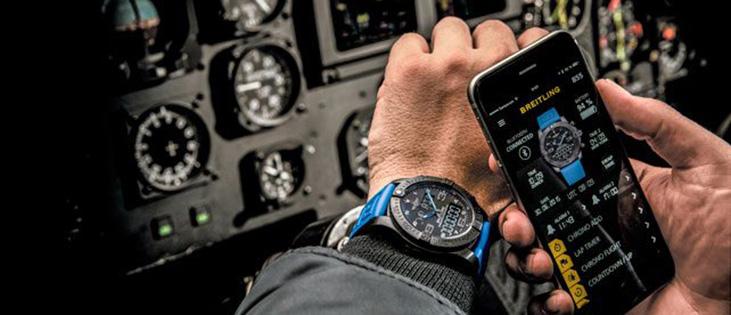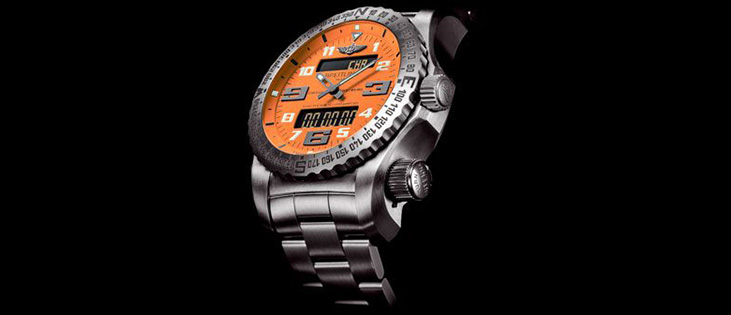We have a chat with Jean-Paul Girardin, CEO of independent Swiss luxury watchmaker Breitling to get a sense of where India fits on their priority list and also discuss their new connected timepiece.
What’s your plan for India in 2016?
India is an important market for Breitling. It’ll be a part of our worldwide launch of the new Exospace B55. There’ll be an official launch event in April, and, of course, there’ll be a presentation of all the new models that we’ll present in March at Baselworld 2016.
What sets the Breitling brand apart?
What’s really special is that we’ve been focused on technical watches and chronographs since the very beginning. In 1884, when the company was founded, Breitling was already a specialist in stopwatches. Another aspect is our close link with aviation, which we’ve had for more than 80 years now. And I think the third important point is that Breitling is still one the very few remaining independent brands that’s also family-owned – and that makes Breitling a little bit special.
What draws you to aviation in particular?
In the 30’s, Breitling was also in the business of producing cockpit clocks for airplanes. Then Breitling reinforced its links with aviation when it was appointed as the official supplier of all the cockpit clocks for the British Royal Air Force for the Second World War. After the war, Breitling continued in commercial and civil aviation and presented the Navitimer in 1952. So, you see, there’s a long history between Breitling and the aviation world. It continues today with the Emergency and the Exospace B55.
 Breitling creates a connected watch that’s a luxury timepiece first – the Exospace B55
Breitling creates a connected watch that’s a luxury timepiece first – the Exospace B55
As an independent watchmaker, how important is it to have an in-house movement?
This project, which started in 2004, took us five years to develop and then to industrialise production. It wasn’t just a marketing tool. It was really to secure Breitling’s innovation and production capacity of high quality chronograph movements. To have an in-house movement was really to secure the independency of Breitling as a family owned brand in the long term.
What’s your take on the connected watch?
For Breitling, we see the connected watch as a new innovation possibility to improve the functionality of the product. You may know that more than 100 years ago, Breitling invented the push-pieces at 2 o’clock to make the functioning of the chronograph easier. Then we introduced the Navitimer in 1952. In 1995, we had the Breitling Emergency, and nobody had talked about a connected watch yet – but Breitling was already sending signals to satellites! So, for us, functionality is really important – beside high precision and strong design. Our slogan is ‘Instruments for Professionals,’ so this new connectivity technology was an opportunity for us to improve the functionality of our chronograph. We didn’t want to just have another terminal of the smart phone on the wrist – because it’s very difficult to compete with such a user-friendly interface as the touch screen. So to have a weaker phone on the wrist wasn’t really the purpose, but it was about having a real Breitling chronograph with real hands and a real dial – a watch that looks like a real Breitling chronograph. And if we add connectivity to this, it makes the users life much easier. In this case, it’s the other way around – the smart phone is in service to the watch, and the watch remains the master.
Is the connected watch the next challenge or the next opportunity for the Swiss watch industry?
I think it’s both. Of course, it’s a challenge, but it’s also a kind of opportunity. I think there’s a way to use this type of innovation differently. Of course, everything we do has to fit with the Breitling tradition of Instruments for Professionals. We understand that innovation and tradition is not a paradox. Everybody has to continue to innovate, but remain faithful to what made the brand successful historically. And this is the philosophy behind the Exospace B55.

In 1995, when connected watches were unheard of, the Breitling Emergency was sending signals to satellites
Would you say that the future of the traditional mechanical watch is secure?
I think they are two different products. In the 70’s, the Swiss watch industry almost died because the Japanese came in with quartz watches. At the time, the main purpose of a watch was to tell time. And quartz watches offered a more precise and a higher performance product at a cheaper price tag. So it was a product of substitution, which aimed to replace one with the other. Here it’s different – a mechanical luxury watch is not just a functional product, it’s more like a piece of art. For example, if you look at a really nice landscape and you want something very precise, you take a 20-30 megapixel digital camera and you take a shot of it – that will be a very precise image. If you want something more artistic, you ask an artist to make a painting. It’s the same landscape with two nice pictures – where one is very precise and the other very artistic. But one is not better than the other. They can both exist, and I think it’s the same with these connected watches, quartz watches or even mechanical luxury watches. They will remain together in a much more segmented market. Much like in the car industry, you have small cars, big cars, electric cars, and they all co-exist together. So, just like that, there’s a place for all kinds of watches.
Who is the Breitling customer?
It’s difficult to say. We’ve found that we have some quite young customers who save money to get their first Breitling watches. We have pilots who buy Breitling watches when they get their pilots license, we have doctors, entrepreneurs, lawyers – all kinds of professionals of all ages really. But we have noticed two common denominators in Breitling customers. First is that they’re mainly men – because function is very important, we cannot go below 38mm in diameters for a legible chronograph. As a result, we have big watches mainly. Now more-and-more ladies are starting to wear big watches, but it’s still mainly men who wear big watches. And the second is due to the strong design of our product. I think all Breitling buyers have strong characters. So, to summarise, it’s mostly men with strong characters who are our main customers.
How do you see the Indian market evolve, and how important do you see it becoming for Breitling?
I think India is an extremely high potential market for Breitling. First of all, Indian customers are well travelled and their watchmaking knowledge is very mature. People know what they’re talking about when they talk about watches. So we see a lot of potential growth in India for Breitling. And, as Indian customers are very knowledgeable, they really understand our product and there’s strong interest in Breitling in India – that’s why we’re following the Indian market very closely.
